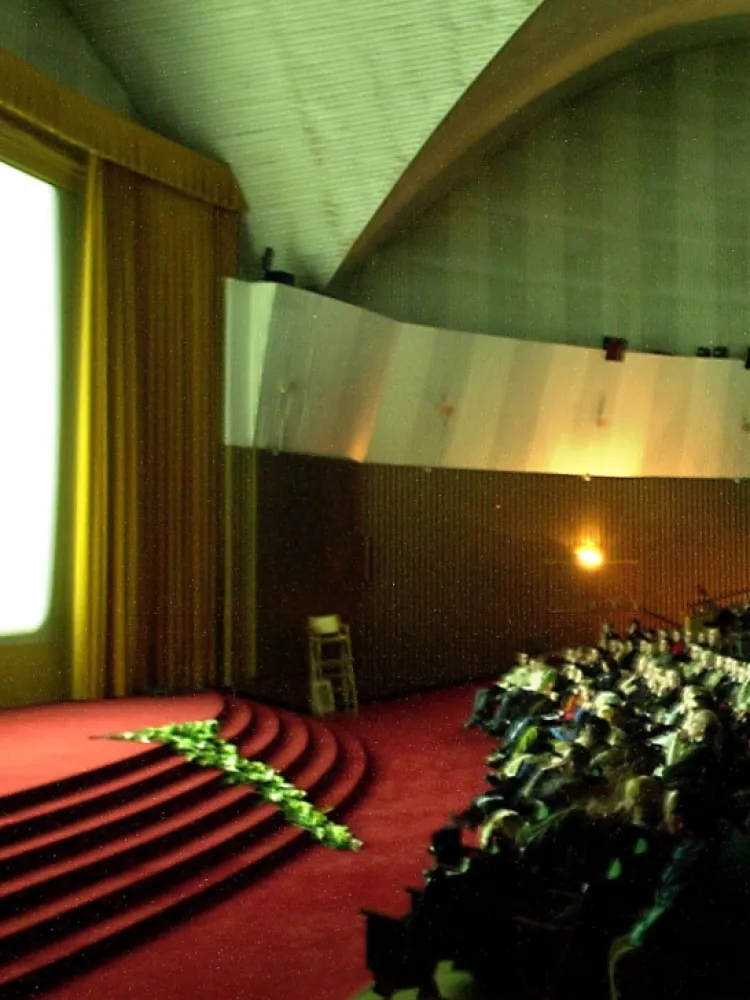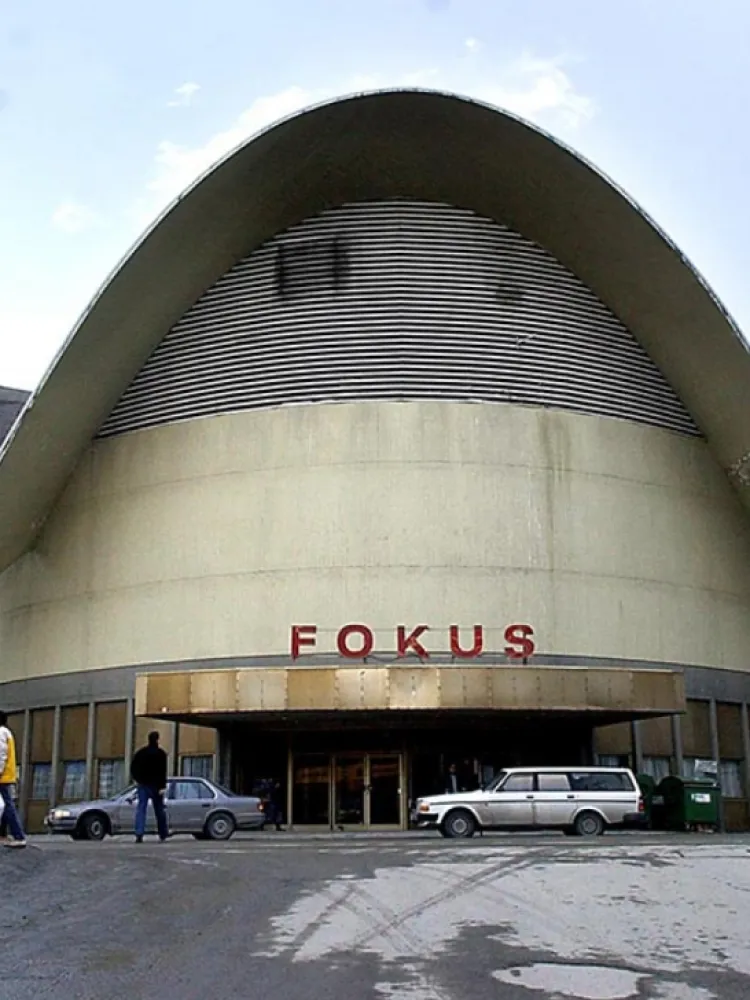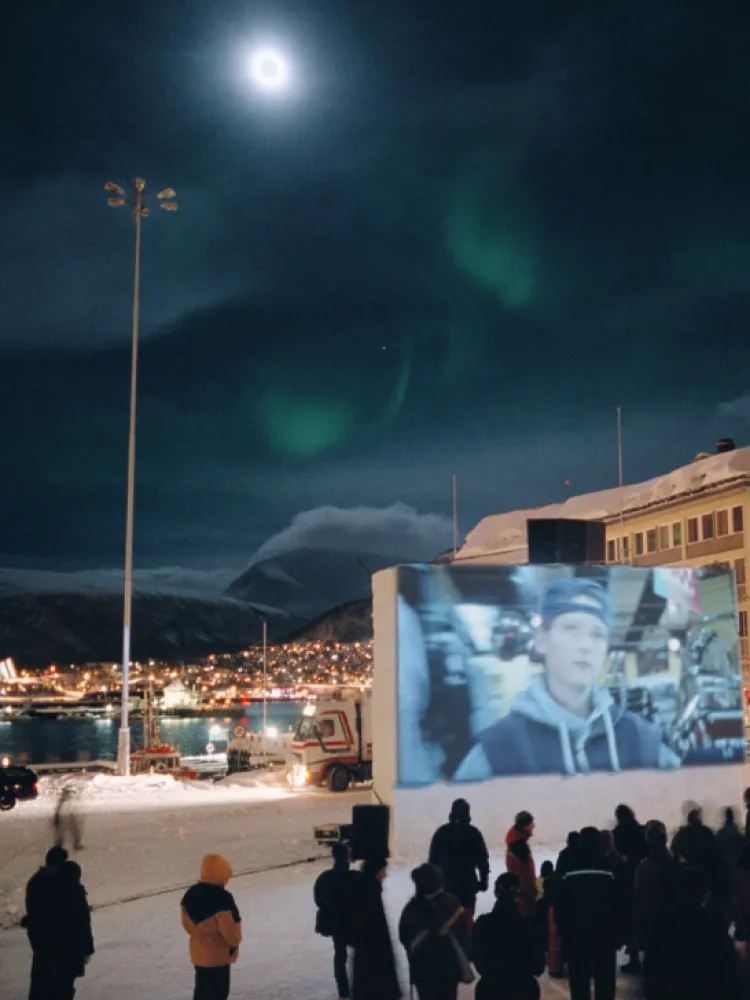Urban experiences meets raw Arctic nature

Film magic in the Polar Night
For many locals, Tromsø International Film Festival (TIFF) is a magical highlight during the winter darkness. We had a chat with former Festival Director Martha Otte before the kick-off of festival number 30.
Text: Lone Helle. Photo: Mats Gangvik
The film dust has barely settled after the 29th edition of the festival when we meet the festival director for film chat in the heart of the festival, Verdensteatret Cinematek.
“At the moment, I can’t say a lot about what’s going to happen in 2020. I hope we can gather some threads from the festival’s history and celebrate them together with the members of the audience who have attended faithfully the first 30 editions of TIFF, those who will attend the next 30 editions and everyone who fits somewhere in between,” says Festival Director Martha Otte.
Dynamics and contrasts
Otte’s TIFF adventure started with a brief appointment for the festival in 1998. And it has snowballed ever since. She has now sat in the director’s chair for 15 years and gives the city of Tromsø much of the credit for TIFF becoming such a huge success.
“Tromsø is the optimal festival city: a compact city centre surrounded by spectacular nature combined with a robust social life and a local population that’s curious about the world and open to new impressions. Add to that a festival profile that takes the audience seriously, trusts them, and challenges them with film experiences they didn’t know they needed. Film is an art form that is social by nature. It gathers people together in a dark room and demands their attention at the same time. The setting for the festival, the finest season in the north – the Polar Night, matches the cinema perfectly. I think our slogan “Frozen land, moving pictures” captures this perfectly. The fact that a film festival in the Polar Night at latitude 69 degrees north would be a success was not something that could be taken for granted, but in hindsight it still seems quite obvious,” says the festival director.
And a success it has become. Every year, in the third week of January, downtown Tromsø is filled to the brim with people who are going to a film, have been to a film, are rushing to the next film – or who are having a break between films. People who have had memorable film experiences, good discussions and who are enjoying the bustling city life.
“Tromsø is the optimal festival city: a compact city centre surrounded by spectacular nature combined with a robust social life and a local population that’s curious about the world and open to new impressions.
“If I had lived in a small town in the US with a population of 75,000, it’s unlikely it would have been as lively as Tromsø is. Tromsø has a wonderful dynamic and social DNA. The contrasts between the darkness and light, and the closeness between the city and nature, break with the norm. Tromsø is not A4. The people are curious and open for more. This has helped shape the festival,” says Otte, who originates from California.
Playing with the format
TIFF made its debut in early 1991 – during the dark season. A season that many considered “dead” because there was virtually no life on the streets. The festival was intended to be a counterbalance to the strongly Hollywood dominated cinema world of the day by screening alternative films from around the world. In those days, there were only two screening venues (Verdensteatret and Fokus), however, today TIFF screens films at 8 venues and 12 screens throughout the city.
“Take the old cinema, Fokus Kino. It’s better suited as a library, ha-ha. Nevertheless, it was a wonderful cinema. It had a high ceiling and you climbed stairs to enter the cinema. Today the audience need to go down stairs to reach most cinemas in the world which are generally underground,” says Otte.’
The film festival can report new audience records virtually every year. While ticket sales totalled 5,200 tickets during the inaugural festival, this figure had jumped to 60,342 in 2019.
TIFF has served the audience film screenings combined with beer tastings, karaoke and a dirty dancing dance party to mention a few.
“We do special screenings because it’s fun! There are many ways to ‘unwrap’ the opportunities film presents”.
Outdoor screenings are another tradition that suits the dark season well. “In years gone by, we screened films outdoors on a screen made of snow, but we have stopped doing that. There are no guarantees when it comes to the weather in Tromsø in January. It can change in a matter of hours and a ‘snow screen’ deteriorates rapidly in mild weather. That detracts from the film experience. We still have outdoor screenings, but we now use a normal screen. We have chosen to focus on providing a good film experience outdoors in the Arctic environment.”
What impact do you think TIFF has had on Tromsø?
“I hope many strong film experiences has made a difference to people over time. We have a humanistic festival profile that deals with the world – getting to know other cultures and human destiny and a variety of perspectives.”
What sort of films do you like best?
“Films that break the mould, that surprise me, and still manage to tell me something about human experience.”
The Festival Director is in no doubt when it comes to what she likes most about the festival.
“I love being in the cinema when the lights go down, just as the film begins to unfold on the screen. I look at the faces of the audience lit up by the light from the screen. I can feel the sum of their expectations. A magical moment!”
FACTS
Who: Martha Otte
What: Festival Director
Where: Tromsø/Hayward, California
Food: Nothing can beat a hot fish cake in your hand!
Drink: A hot spicy apple toddy with fresh ginger
Instagram: @tiffmartha
Webpage: www.tiff.no
TROMSØ FAVOURITES
Hike: Walking along the quayside in downtown Tromsø early in the morning in the spring.
Place: The cinema at Verdensteatret
Activity: Watching a film at Verdensteatret
Favourite places in the city: Verdensteatret
Travel essentials for Tromsø: Using ice grippers under your shoes should be compulsory for everyone during the winter, but only outside!

Inside the old Fokus cinema
© iTromsø
Outside the old focus cinema which is today Tromsø library
© © iTromsø